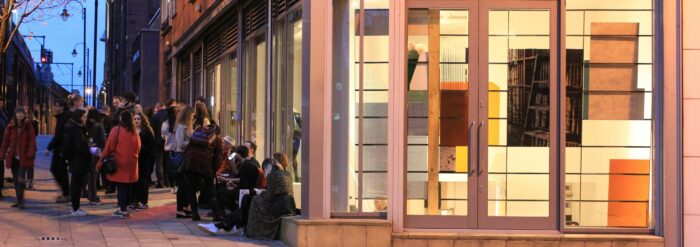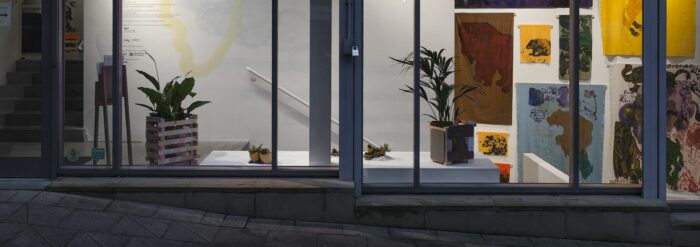‘Paintings’ – Martin Murrey
‘Paintings’ – Martin Murrey
24 April 1999 - 13 June 1999
To be a painter of Manchester – as well as a Manchester painter – in the late1990’s is to fly in the face of fashion and the collective wisdom of our age. Martin Murrey has aspired to be both and has succeeded with calm assurance. Working for several years in a studio between Piccadilly Station and the Mancunian Way he has established a dialogue with the life of the city. His pictures tackle the city’s buildings and streets head-on, making unequivocal art from the Manchester that today’s mancunians know – The Cornerhouse, Oxford Road, Mash and Air, Canal Street. Just as important, he has found ways of painting the city which are entirely his own, sidestepping the clichés of illustration and the glibness of photography, the picturesque as well as the apocalyptic. These are quiet, brave pictures that go against the grain, yet seem to succeed effortlessly.
Part of their success is due to the very personal nature of Martin Murrey’s Manchester. His paintings show corners of the city he knows intimately, bars where he meets with friends, roads he has crossed a million times on his way to the cinema, to The Castlefield Gallery or to the Atlas Café.
They are made out of affection rather than duty, as records of times spent in favourite company or in anticipation of an evening behind a brilliantly lit façade. His pleasure in his subject is evident in the pictures themselves, in the warmth of the colours that describe the bridges and brickwork, in the delicate handling of paint that evokes their atmosphere, in the gentle humour that animates a distant figure.
Martin Murrey’s view of Manchester is selective – even obsessive – in a way that tells us about ourselves, our times and our city. No longer a Lowry-esque panorama of mills and chimneys, not even a high-rise, high tech vista, this is the Manchester of street cafes and late-night movies, warehouse living and alternative culture. If its public spaces can still be stark, it is a place that transforms itself at will, especially by night, when it takes on new colours and sounds and – paradoxically – a new sense of its internationalism. The achievement of these pictures is in forms and passages of paint that are true to one persons experience, pinning down sensations and events and an unfolding history that is part of our shared metropolitan life.

